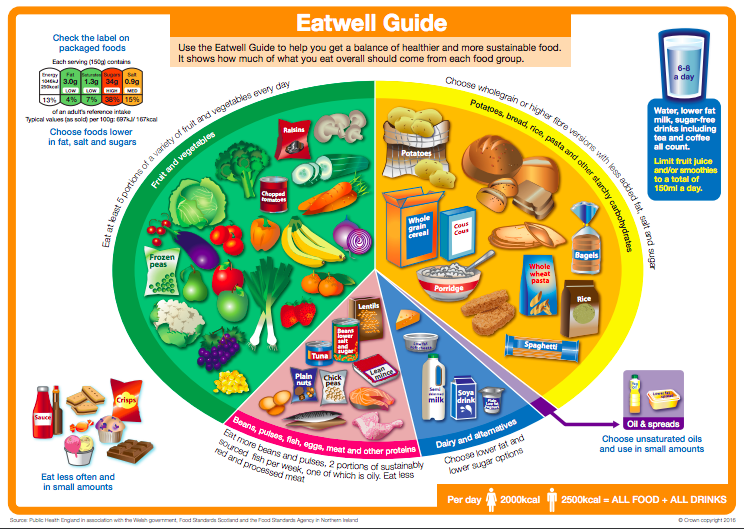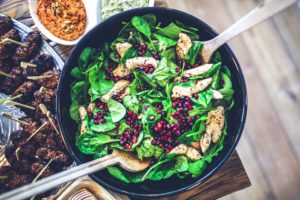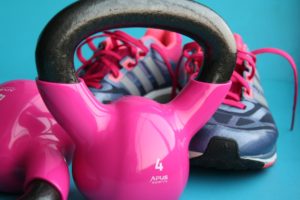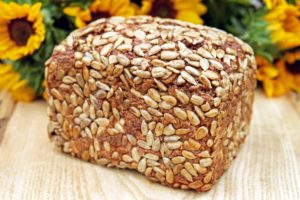In a world full of nutrition confusion, I’ve been seeking a simple answer to the question, what is a healthy diet?
A diploma in Nutrition and Weight Management
Despite previous success in losing weight, it occurred to me last year that I still didn’t know what actually made a healthy diet. So I decided to embark on a diploma in Nutrition and Weight Management. I’ve been studying an accredited course by the Association for Nutrition (AfN) and I’m delighted to share that I’ve passed part of the diploma that allows me to train as a Nutrition and Weight Management advisor (but I still have several modules to study before I achieve the full diploma – wish me luck). Although I have lots more to learn, I would like to share my main takeaways from the course so far.
1. Visit NHS.co.uk
The NHS, among lots of other things, is a fantastic nutritional resource and a good place to visit if you’re ever unsure what to eat for good health. My favourite resources are the Eat Well Guide and 12 week NHS weight loss plan. The whole site is filled with tons of information on healthy eating along with more specific notes on things like, food advice for vegans, a guide on vitamins, meal ideas for kids and lots more.
2. Carbs are not the enemy
I’ve always felt conflicted about carbohydrates. There are so many low carb diets out there that seem to work, but anytime I’ve tried them I’ve been left feeling rubbish. Since studying nutrition I’ve gained a much better understanding of the role of carbs and just how important it is to consume this food group (e.g. rice, potatoes, porridge). In a nutshell, it’s our body’s main provider of energy and the main source of energy when it comes to ‘brain’ fuel. Plus wholemeal/wholewheat varieties are usually high in fibre which is also incredibly important for good (gut) health and something people in the UK are known for not having enough of. What I have also learnt is what makes a healthy portion and in hindsight, this is something I personally struggle with (aka. I eat too much for my body). Which leads me onto…
3. What to put on your plate
The Eat Well Guide referenced earlier not only gives a visual demonstration of what kinds of food you should be eating, but also an idea of how much from each food group. This has been a great help for me when it comes to understanding portion sizes.

4. Macros and micros
I’ve been intrigued by these words for a while and this is what they mean. Macro stands for macronutrients – these are the food groups we need to consume the most of everyday. This includes fat, protein and carbs. Micros stands for micronutrients, also important and are vitamins and minerals we need to consume regularly, in smaller amounts. For good health it’s important to consume a range of foods from that contain these macros and micros. With regards to fat, protein and carbs, it’s recommended that 10-15% of you calorie intake comes from protein, 30-35% from fat and 50-55% from carbs (these vary a little if you drink alcohol). When it comes to vitamins and minerals, you’ll be in safe hands if you eat a wide range of fruit and veg. Which brings me onto my next point…
5. “Eat the rainbow” aka lots of fruit and veg
I always new fruit and vegetables where key to a healthy diet, but I really didn’t appreciate just how amazing these things are. They’re a great source of vitamins and minerals and also contribute towards your macro intake. If you’re ever unsure what to eat, just make sure your plate is piled high with these and ‘eat the rainbow’ as they say – as different coloured fruit and veg actually provides you with different vitamins and minerals.
5. Moderation and balance
I used to think phrases like a ‘balanced diet’ or ‘all in moderation’ were boring sayings, and that there must be something far more complicated behind heathy eating and successful weight loss. However, now that I have a better understanding of how everything we eat works together I appreciate that this really is the key to a healthy diet and healthy weight loss. When it comes to the foods that we love the taste of but know aren’t the best for us (e.g. foods high in fat and sugar like chocolate) it’s ok to have them… but in moderation. This is something in particular that I’ve tried hard to do, otherwise the alternative (cutting foods out) can lead to binge eating, and usually binge eating on that exact food you were trying hard to ignore.
6. Calories and weight loss
There are lots of methods out there with regards to how to lose weight, but essentially you need to consume less calories than you’re using (than you’re burning/working off) to create a deficit and that leads to healthy weight loss. This is usually a different of 500cals per 1lb of fat. Team that with eating the right kinds of foods (my next point) and you’ll lose excess fat and feel great, too!
7. Foods to eat
Foods that are great for your health and weight loss are…
– A wide range of fruit
– A wide range of vegetables
– Wholegrain varieties of rice, pasta and bread (as these are higher in fibre), along with potatoes, porridge and other starchy carbs
– Protein, from foods such as chicken, tofu, eggs and fish
– Beans, lentils (lots of legumes and pulses)
– Unsaturated fats (e.g. avocados, salmon and nuts)
– Dairy or alternatives, such as milk and yogurt. (There are conflicts in whether you should consume full fat or low fat, but for weight/fat loss, lots of experts agree that its better to go for low fat diary options as you can consume good fats from other sources).


